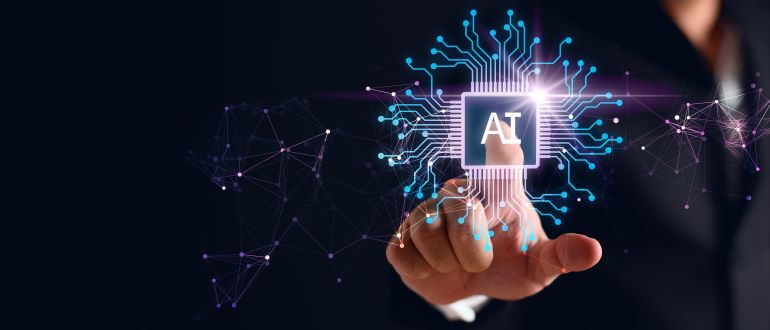
Software engineering teams seeking to enhance productivity and cost-efficiency are increasingly adopting generative artificial intelligence (AI).
A survey of more than 500 software engineers found that 72% leverage GenAI in their software development, and 48% use the technology on a daily basis.
Across all major industries, development teams are able to hit quicker time-to-market, while improving customer service and meeting business goals with the application of the technology.
The most common use cases for GenAI models and agents in organizations are knowledge management, vulnerability detection and fix recommendations. Businesses are also employing new, third-party tools to auto-complete code snippets and minimize development time and errors, while improving software reliability and accelerating debugging processes.
Even more will be possible with GenAI as innovations like real-time adaptive coding, semi-autonomous design systems, new meta-programming languages with user-augmented programming and predictive maintenance capabilities grow and gain more traction.
So, for efficient software engineering, now and in the future, it’s imperative that organizations know how to leverage GenAI.
How GenAI Elevates Software Engineering
The immediate benefits of GenAI have made its use by software engineers a virtual necessity in today’s competitive marketplace. In fact, Techerati predicts that GenAI will be adopted by 86% of the software workforce by 2026.
One reason for this rapid adoption is custom GPT models. Trained on vast product knowledge, these models provide engineers with much faster access to essential information. This increases the velocity of delivery efforts, helping minimize review cycles with product teams.
When developers leverage GenAI, AI automation is closer to the source code repository. This increases the velocity of software iterations and delivery by streamlining workflows, reducing bottlenecks and improving developer experience with traditional Agile tools like Jira, Trello and Asana. Engineers can gain improved visibility and traceability of issues with GenAI-enhanced Agile tools, enabling faster analysis, resolution and tracking to closure while providing deep insights that align them more closely with the product and customers.
It also reduces manual updates in traditional Agile tools, saving time and keeping the process uncomplicated and more straightforward. Bain & Company reports that GenAI “appears to save about 10% to 15% of total software engineering time” and, with improvements, could save as much as “30%.”
Also, GenAI tools demystify complex domain knowledge and ensure stakeholders on the software engineering teams understand the product vision clearly. Another benefit to using the technology is that documentation stays more up-to-date and accessible, which is crucial for the long-term maintainability of software.
Overcoming Challenges
Some key benefits offered by GenAI include increased productivity, improved code quality, enhanced collaboration, faster onboarding and reduced cognitive load. The key to realizing these benefits is overcoming common GenAI integration challenges.
Traditional scrum teams often encounter ambiguous requirements, skill gaps, ethical and compliance concerns and substantial technical debt created due to attempts made to integrate GenAI with legacy systems.
The MIT Sloan Management Review reports that technical debt currently costs corporations in the US over $2.3 trillion annually, and remediation efforts take up approximately 15 percent of their individual IT budgets.
Those aren’t the only challenges faced by the scrum teams. They also need to frequently deal with rapidly evolving technology that can impact the achievability of sprint goals and force changes in task prioritization. Teams may also face delays that arise from dependency on data acquisition and cleaning. Establishing test automation frameworks and validating results may also initially require more effort than traditional software, which could upset sprint timelines if not considered beforehand.
To mitigate common GenAI adoption challenges, organizations can integrate machine learning operations (MLOps) practices for reliable AI workflows with streamlined model lifecycle management. They can also implement rigorous code review processes to validate AI-generated outputs, consistently update their AI models with new, diverse and vetted training data, and conduct regular security audits on AI-generated code. Furthermore, organizations must ensure compliance with data protection regulations and best practices for secure development.
One of the best ways to overcome these challenges is to choose the most effective GenAI tools. Thoroughly vetted tools that support seamless integration with popular integrated development environments (IDEs), continuous integration and continuous delivery (CI/CD) pipelines and version control systems usually make the best choices. Popular tools include GitHub Copilot and OpenAI Codex for real-time code, and DeepCode and SonarQube for proactive identification of issues.
Preparing for the Future
Recent statistics indicate that approximately 92% of Fortune 500 companies have adopted GenAI technologies. By taking advantage of new GenAI tools and other measures to overcome adoption challenges, these large corporations can now use GenAI for everything from improving customer service to streamlining operations, optimizing business processes, generating insights from large datasets, developing new products, and much more.
To join those succeeding with GenAI, it is imperative to anticipate the ongoing evolution of this breakthrough technology. Ways to prepare for GenAI’s future growth and changes include regularly investing in training and upskilling; promoting collaboration between AI experts and staff; addressing ethical considerations and legal guidelines in the development process; setting up AI-driven development environments to minimize workflow disruptions; conducting regular assessments of GenAI performance; taking advantage of low-code/no-code tools to speed up development; and taking advantage of GenAI-powered testing tools to automate bug detection and improve efficiency.
While GenAI already has a transformative effect on software engineering, it promises to play an increasingly central role in shaping how software is designed, developed, tested and maintained. To remain competitive in this rapidly evolving landscape, it’s essential for organizations to stay aware of how others are best utilizing the tech, and actively prepare to take advantage of future innovations. By being proactive with their use of GenAI and staying ahead of the curve, companies will be better positioned to thrive in this new era of AI.

